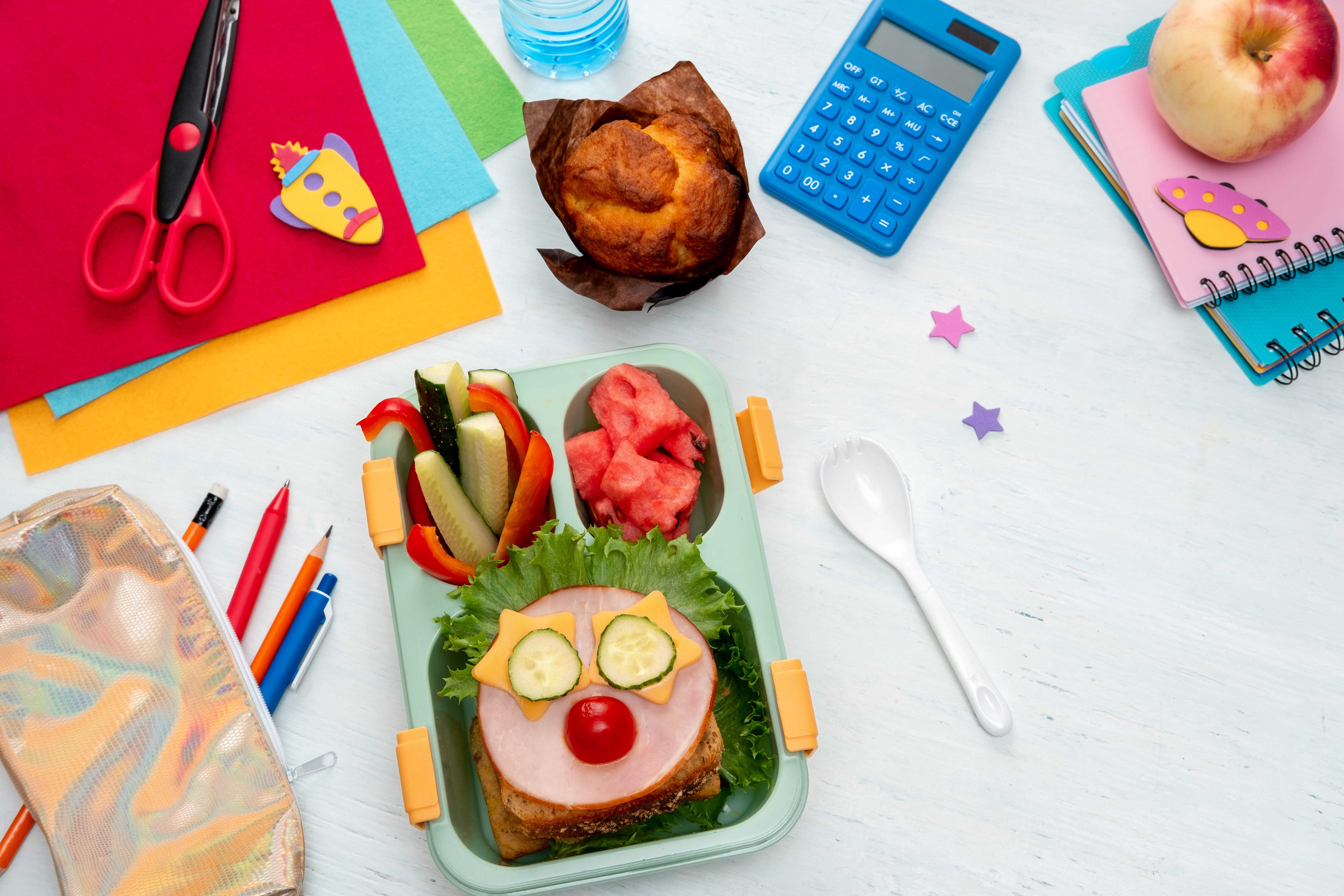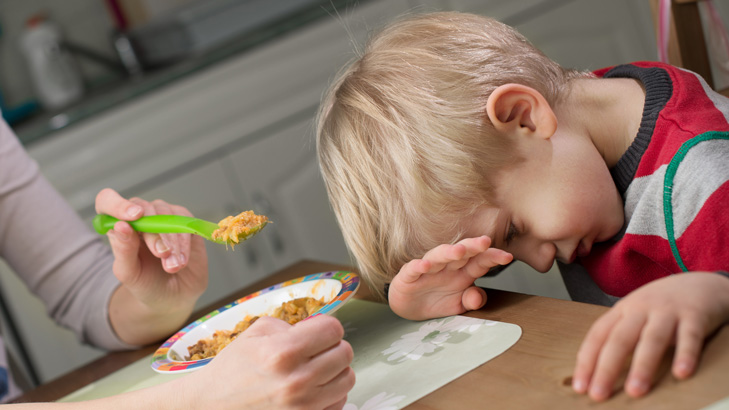By Kate Chury RD
Though it isn’t often discussed constipation is a common problem. Most people experience at least some degree of inconsistency when it comes to our bowel movements, and that holds true for our children as well. Luckily, for the vast majority of cases, constipation is a temporary and easily managed condition.
How Can I Tell If My Child Is Constipated?
Constipation tends to manifest in two ways:
- Seeing a marked decrease in the frequency of bowel movements and/or
- Having stool that is dry and hard to pass
Your child may be constipated if they are straining to pass stool, are experiencing painful bowel movements, or if they are complaining of feeling full or bloated.
Constipation is defined as having less than three normal bowel movements per week. However, this is purely a guideline as not everyone has the same number of bowel movements per week. Some individuals have one or even more bowel movements per day, while others only need to eliminate their solid waste every couple of days.
To determine if your child is constipated you think about how frequently your child typically has bowel movements and take note if this number decreases. You should also consider the consistency of your child’s stool: hard, dry stool may be an indication that your child is constipated.
The Causes of Constipation
Constipation can be caused by a variety of factors. However, some of the most common causes of constipation include:
- A change in daily routine: A significant change in daily routine such as travel or starting a new school schedule can disrupt our bowel’s usual routine. Our bowels work best when our routines are consistent, and some individuals may find that their digestive system is particularly sensitive to change.
- Withholding bowel movements or ignoring the urge to eliminate solid waste: Children that are toilet training or dislike using public toilets may ignore their body’s signals that they need to eliminate solid waste, inadvertently throwing off their bowel’s natural rhythms.
- Certain medications: Some medications, supplements, and vitamins such as iron and calcium can disrupt how frequently we experience bowel movements and slow the process down. This, in turn, means that bowel movements become spaced farther apart.
- A lack of physical activity: Several studies have shown that a lack of physical activity can cause increased rates of constipation. Physical activity can stimulate and tone the muscles in our bowels, making bowel movements easier.
- Diet: A diet that lacks fibre and adequate amounts of fluid can cause our bowel movements to become more spaced out and make our stool more difficult to pass.
Relieving Constipation
If your child is experiencing constipation, there are several strategies you can use to help get them back on track. Ensure that your child has a consistent toileting routine, both at home and at school or daycare, and is getting enough physical activity. You should also review your child’s diet to ensure it is well-balanced and contains adequate amounts of fluids and fibre.
Focusing on Fibre Relieves Constipation
Fibre is an essential part of a well-balanced diet and is found in plant foods. Fruits, vegetables, whole grains, legumes, nuts, and seeds are all foods that contain fibre. Though our bodies are unable to digest fibre, it is because of this that they need it. The indigestible nature of fibre gives our stool the structure it needs to be passed easily.
There are two types of fibre: soluble and insoluble.
- Soluble fibre absorbs water in the digestive tract and makes our stool softer
- Insoluble fibre does not absorb water and is used to make our stools bulkier
Both types of fibre are needed to make our bowel movements easier.
Children need different amounts of fibre depending on their age and sex:
- Children 1 – 3 years old: 19 grams per day
- Children 4 – 8 years old: 25 grams per day
- Boys 9 – 13 years old: 31 grams per day
- Girls 9 – 13 years old: 26 grams per day
- Boys 14 – 18 years old: 38 grams per day
- Girls 14 – 18 years old: 26 grams per day
Fibre is found in a wide variety of healthy foods. To help you ensure your child is getting enough fibre here are a few child-friendly fibre-rich foods that you can introduce at meal or snack times:
Pears
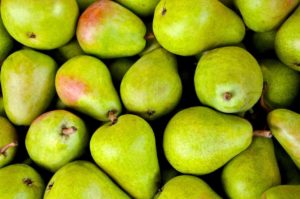
Fibre content: One medium pear contains approximately 5.3 grams of fibre
Not only are pears a great source of fibre, but their sweetness and soft texture make them an excellent food for constipated kids. Pears can be enjoyed as is or served purred if your child does not yet eat solid foods. Pear slices served with yogurt or cottage cheese is a great snack.
Avocados
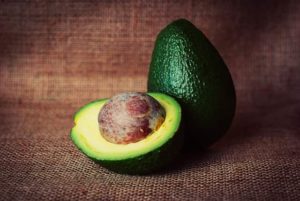
Fibre content: One half of a medium sized avocado contains approximately 4.6 grams of fibre
Avocados may seem like an unlikely source of fibre, but these beloved green gems are packed with fibre. Avocados can be turned into guacamole and enjoyed with chips, served smashed on toast, or served diced.
Raspberries
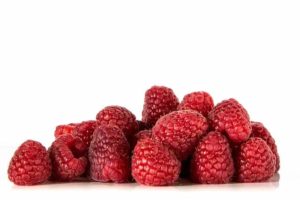
Fibre content: One half cup of raspberries contains approximately 4.2 grams of fibre
Considering how delicate raspberries are you may be surprised to learn that they are an excellent source of fibre. A bowl of raspberries is a popular treat amongst children of all ages, and raspberries can easily be added to smoothies or used to top off a bowl of yogurt or cereal.
Chickpeas

Fibre content: One half cup of chickpeas contains approximately 4 grams of fibre
Chickpeas, also called garbanzo beans, have a mild taste and a rich, creamy texture, making them an incredibly versatile food. Children that love crunchy foods may be enticed by chickpeas that have been seasoned and roasted. For a creamy, tasty snack try pairing hummus (which is made using pureed chickpeas) with vegetable sticks, crackers, or pretzels. Hummus is available in a wide variety of flavours, making it easy to find one that appeals to your child.
Chia seeds

Fibre content: One tablespoon of chia seeds contains approximately 3.7 grams of fibre
Chia seeds are an excellent food for boosting fibre intake. Just a tablespoon of these small, black seeds contains almost 4 grams of fibre. The majority of fibre found in chia seeds is soluble fibre. Chia seeds may not seem child-friendly at first glance, but they can be made into an irresistible chia pudding. Chia seeds can also be mixed into hot cereal (which is also an excellent source of fibre) or baked into tasty treats such as cookies.
Kiwis
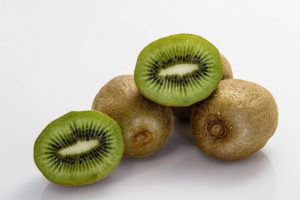
Fibre content: One medium sized kiwi contains approximately 2.1 grams of fibre
A kiwi a day keeps constipation at bay! Studies have shown that kiwis can help reduce constipation and reduce the need for laxatives in individuals with chronic constipation. Along with their high fibre content kiwis also contain an important enzyme called actinidin, which is thought to help promote bowel regularity. Adding a kiwi to your child’s regular snack rotation is a great way to make your child’s bowel movements a little more regular as well.
When to See a Doctor
Most cases of constipation are temporary. However, it is still important to monitor your child’s bowel movements in case medical care is needed. If your child’s constipation lasts longer than two weeks, or if your child is experiencing related symptoms such as fever, vomiting, distention, intense pain, weight loss, or blood in their stool you should take them to a doctor immediately.
If your child becomes constipated regularly, you may also want to consider consulting a registered dietician. A registered dietician can help you review your child’s diet and provide practical advice on how you can improve your child’s digestive health using foods your child will enjoy.
Studies cited:
https://www.tandfonline.com/doi/abs/10.1080/00365520510011641
https://www.ncbi.nlm.nih.gov/pmc/articles/PMC3938666/
http://wprim.whocc.org.cn/admin/article/articleDetail?WPRIMID=376482&articleId=376482








